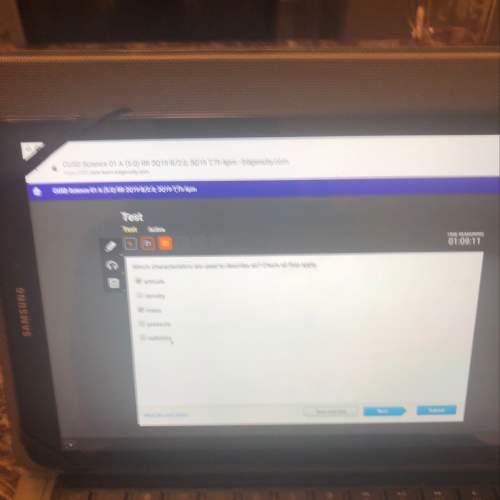Classification of Matter
Everything that has mass and volume is made of matter.
Atoms are the...

Chemistry, 10.11.2020 02:00 ericavasquez824
Classification of Matter
Everything that has mass and volume is made of matter.
Atoms are the building blocks of matter. They cannot be broken down into smaller pieces using chemical reactions or physical changes. Various groups of atoms compose all known matter. Matter can be classified into two major categories: pure substances and mixtures.
Pure Substances
A pure substance is a type of matter that is made up of only one kind of material. All the particles (i. e., atoms or molecules) in a pure substance are the same, and the same properties are exhibited throughout the substance. There are two main types of pure substances: elements and compounds.
Elements—Elements are the simplest pure substance because they are made up of only one type of atom. For example, the element carbon is only made up of carbon atoms, and the element zinc is only made up of zinc atoms. The simplest unit of an element that still has the properties of that element is the atom. However, the atoms of some elements are naturally found bound to other atoms of the same element in two-atom units called diatomic molecules.
Today, there are over 100 known elements. These elements are represented by chemical symbols (e. g., C represents carbon and Zn represents zinc) and are listed in order of their atomic numbers on the periodic table.
The particle diagrams above model particles of elements. Single atoms of helium gas are shown on the left. Diatomic molecules of nitrogen are shown on the right.
Compounds—Compounds are pure substances that are made up of more than one type of element, chemically combined in a fixed ratio. Depending on the type of compound, its simplest unit may be a molecule or a repeating crystal pattern.
Although the properties of a compound differ from the properties of the elements that compose it, the molecules of a compound exhibit the same properties as one another. Also, since the elements within a compound are chemically combined, they can only be separated by chemical changes, such as the change caused by electrolysis.
Compounds have a definite chemical composition that can be identified using a chemical formula. Water (H2O), salt (sodium chloride, NaCl), and sugar (glucose, C6H12O6) are all examples of compounds.
The particle diagrams above show compounds. The diagram on the left models molecules of water. The diagram on the right models molecules of carbon dioxide.
Mixtures
Mixtures are made up of two or more substances that are not chemically combined. Because they are not chemically combined, the substances retain their own properties of matter, even though they are mixed together. Furthermore, mixtures can be separated by physical means, such as filtration or distillation.
The diagram on the left shows a mixture of diatomic molecules that contain only one type of atom. The diagram on the right shows a mixture of two different compounds whose molecules contain two different types of atoms.
Complete the chart below by writing 3 facts about each of the topics. Use the information from the passage you just read. You must write in complete sentences and can use examples.
Matter Pure Substances Mixtures Compounds Elements

Answers: 1
Another question on Chemistry

Chemistry, 22.06.2019 03:30
Calculate the molar mass of aluminum oxide (al2o3). express your answer to four significant figures.
Answers: 1

Chemistry, 22.06.2019 05:50
What happens when the temperature of a solution increases?
Answers: 2

Chemistry, 22.06.2019 08:30
What is the independent variable in this investigation? mass volume sample number substance density
Answers: 3

Chemistry, 22.06.2019 09:00
Chemical energy is a form of a. kinetic energy only. b. both potential and kinetic energy. c. neither potential nor kinetic energy. d. potential energy only. reset
Answers: 1
You know the right answer?
Questions


Mathematics, 10.11.2020 20:10





Mathematics, 10.11.2020 20:10



Mathematics, 10.11.2020 20:10





English, 10.11.2020 20:10

Chemistry, 10.11.2020 20:10

Mathematics, 10.11.2020 20:10

English, 10.11.2020 20:10





